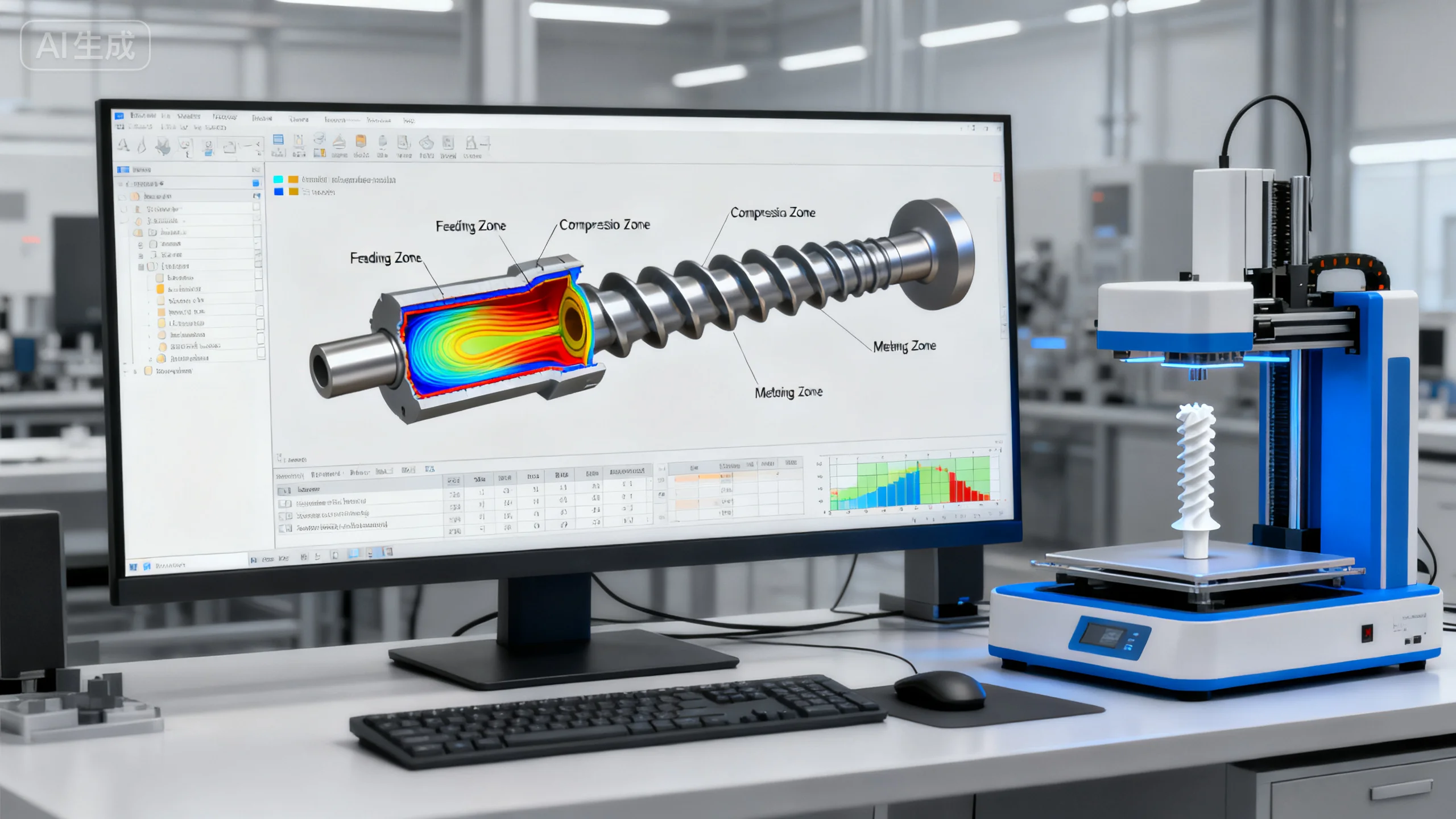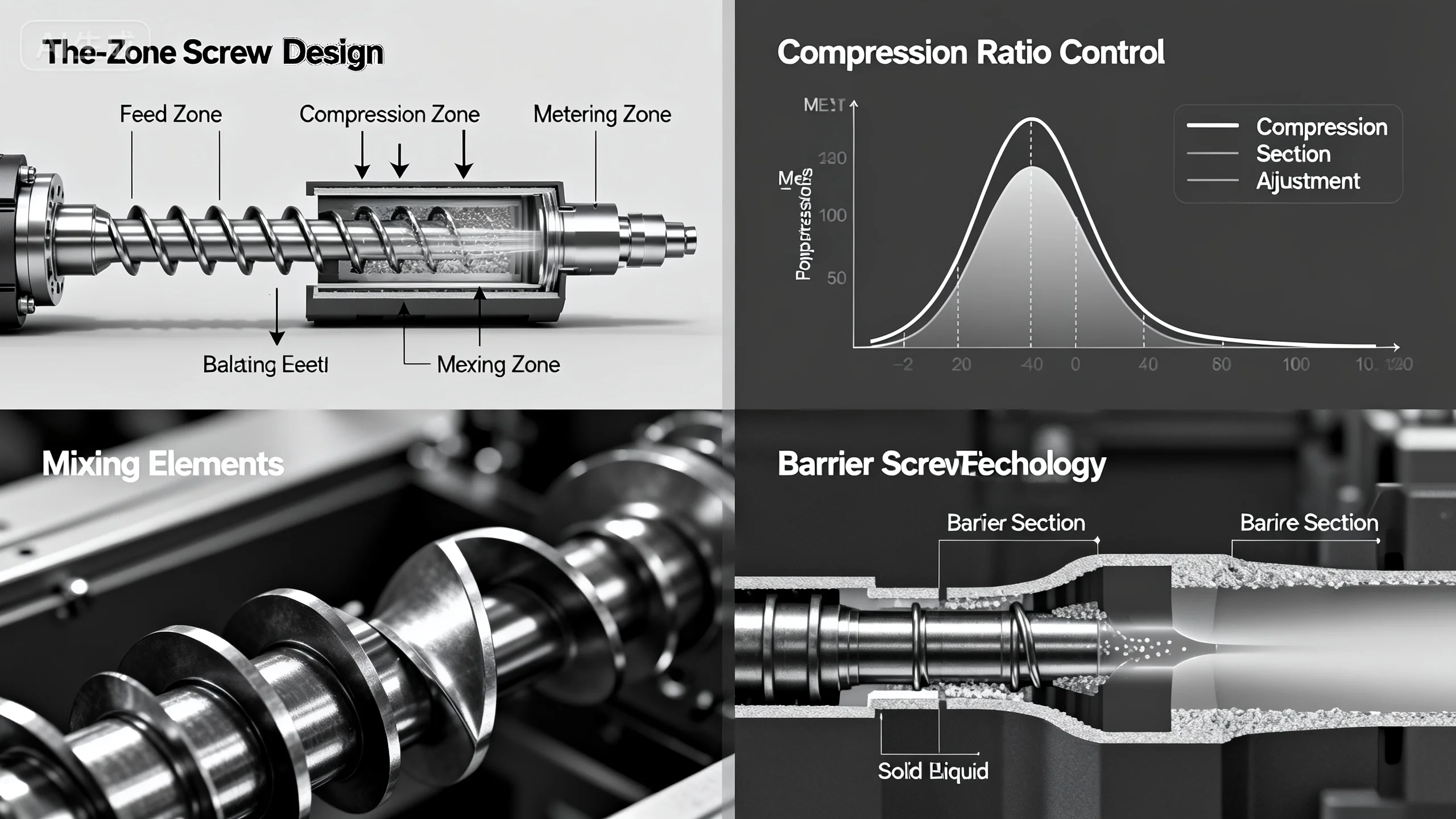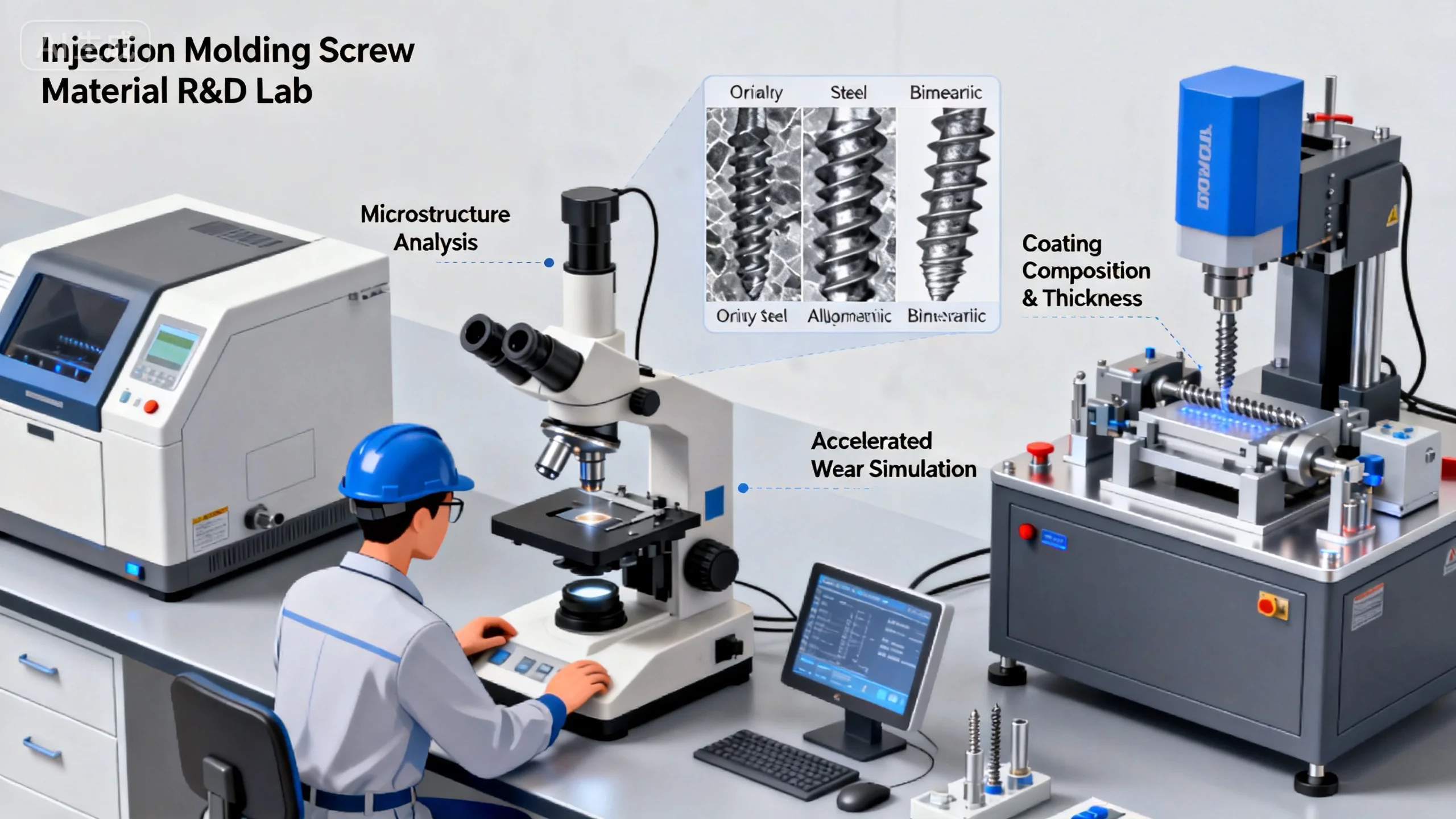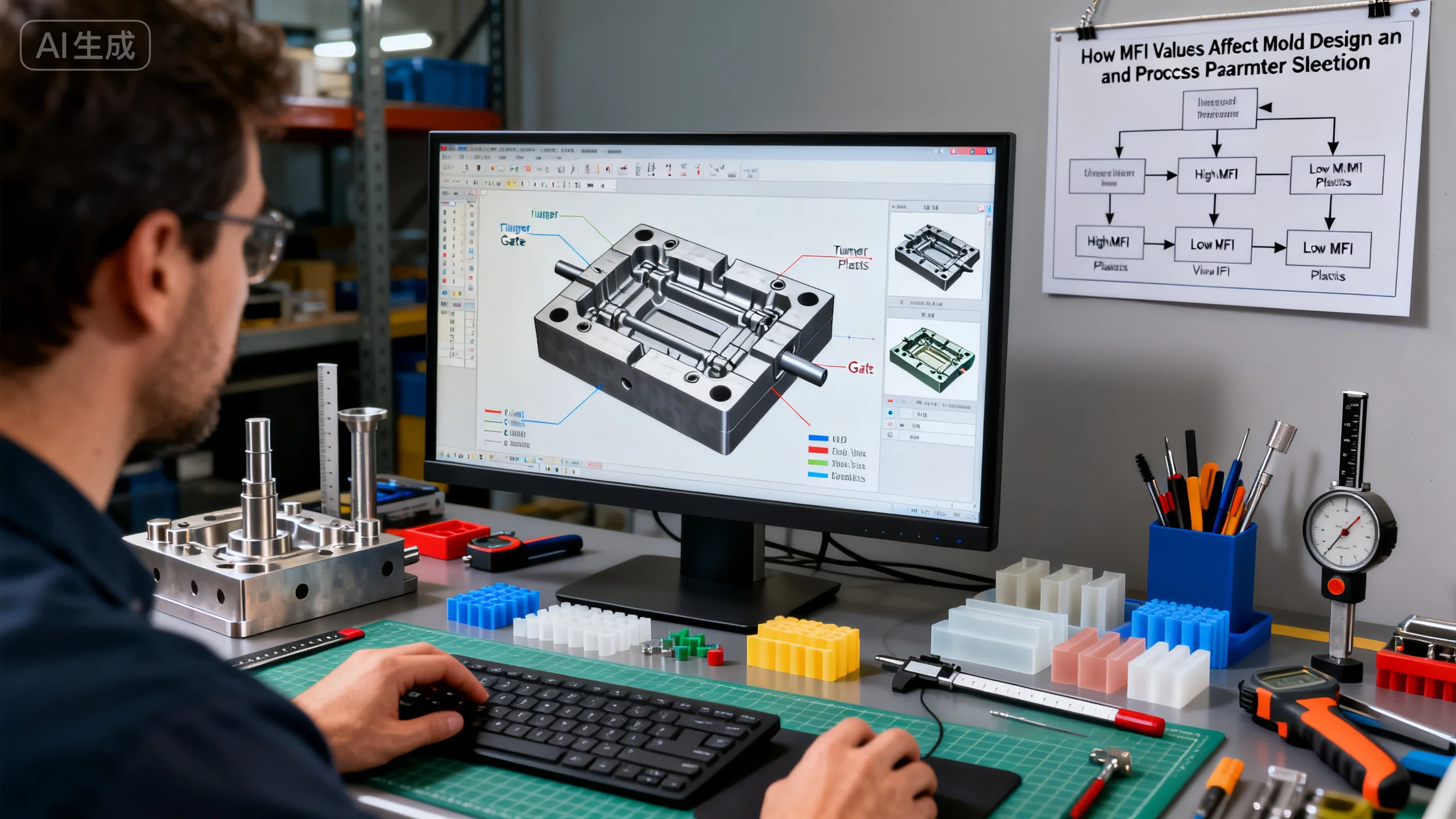Introduction

The injection screw is the core of the plasticizing system. Its geometry, compression ratio, and shear characteristics directly determine the uniformity of polymer melting. An efficient screw design not only enhances plasticizing quality but also ensures product stability.
During production, different materials and processing conditions require targeted screw configurations to balance energy consumption, mixing, and temperature control. Proper screw matching effectively reduces black spots, bubbles, and weld lines.
How does screw structure determine plasticizing efficiency?

The geometry of a screw includes the feed zone, compression zone, and metering zone, each influencing the melting process. A well-designed screw structure achieves optimal plasticizing performance and energy balance.When processing different resins, the pitch, depth, and compression ratio must be precisely adjusted to meet both flowability and uniformity requirements.
- Three-Zone Screw Design: Provides balanced melting, mixing, and metering capabilities.
- Compression Ratio Control: Adjusting the compression section helps optimize melt temperature distribution.
- Mixing Efficiency: Special thread designs improve filler and masterbatch dispersion.
- Flow Stability: Continuous material feeding prevents overheating and degradation.
😊 Scientific screw design is the key to efficient plasticizing.
How do screw speed and back pressure affect melt quality?

Screw speed determines shear rate and melt temperature rise, while back pressure influences mixing uniformity. Balancing both ensures full plasticization and reduces polymer chain damage.Excessive speed can cause thermal degradation, while low speed may result in incomplete melting; similarly, too much back pressure increases cycle time, and too little causes bubbles.
- Speed Regulation: Low speed and high back pressure suit transparent or precision parts.
- Energy Efficiency: Proper settings reduce shear heat buildup.
- Melt Uniformity: Stable back pressure improves molecular distribution.
- Repeatability: Minimizes batch variation and enhances consistency.
⚙️ Controlling screw speed and back pressure is central to achieving stable plasticizing.
Do screw material and wear-resistant coatings affect long-term plasticizing performance?

The screw material and surface treatment significantly impact long-term plasticizing consistency. Wear- and corrosion-resistant coatings extend screw life and maintain uniform melt quality.When processing filled or glass fiber materials, the screw surface must resist abrasion and corrosion to prevent declining plasticizing efficiency.
- Bimetallic Screws: Offer high wear and corrosion resistance.
- Nitriding Treatment: Enhances surface hardness and reduces wear.
- Anti-Corrosion Coating: Protects against acidic gases from PVC or fluoropolymers.
- Material Matching: Choose alloy grades based on the processed resin type.
🔧 The durability of screw materials is the hidden guarantee of consistent plasticizing quality.
Comparison of Screw Types and Plasticizing Performance
| Screw Type | Suitable Material | Compression Ratio | Mixing Efficiency | Wear Resistance | Energy Use | Melt Uniformity | Application |
|---|---|---|---|---|---|---|---|
| General Purpose | ABS, PP, PE | Medium | Moderate | Medium | Low | Good | Standard Parts |
| High-Mixing | PC, PMMA, Nylon | High | Excellent | Medium | Medium | Superior | Optical Parts |
| Wear-Resistant | Glass-Filled Materials | Medium | Excellent | High | Medium | Stable | Engineering Plastics |
| High-Speed | TPE | High | Good | Medium | High | Stable | Fast Molding |
👉 Looking for the perfect screw for your production line? contact us today to customize your plasticizing solution!
From Screw Design to Process Optimization
In injection molding, screw performance interacts with temperature control, resin drying, and mold design. Integrating screw performance into system-level optimization achieves perfect balance between plasticizing and molding.With process monitoring and feedback systems, screw parameters can be dynamically adjusted to improve melt quality and production efficiency.
1.Closed-Loop Control: Enables automatic parameter correction and stability.
2.Material Matching: Selects the optimal screw for each polymer type.
3.Energy Optimization: Variable frequency drives reduce overall consumption.
4.Production Consistency: Ensures uniform quality across large volumes.
Conclusion
The screw is more than a feeding component—it is the central control of plasticizing quality. Proper design, precise control, and durable materials together ensure stability and efficiency.From structure to surface treatment, every detail impacts final product performance. Continuous screw system optimization is the key to building competitive injection molding capabilities.
For expert assistance in implementing high-performance screw solutions for your production needs, visit our resource center or contact us. Let’s help you scale up your manufacturing with precision and efficiency!







